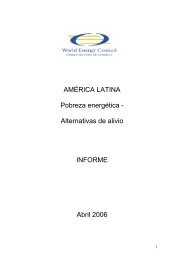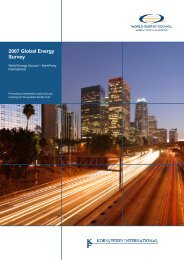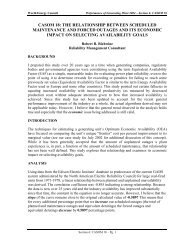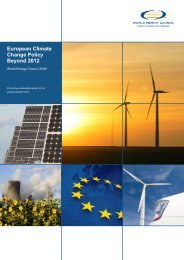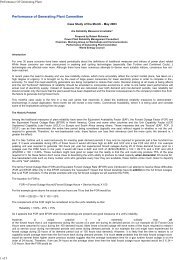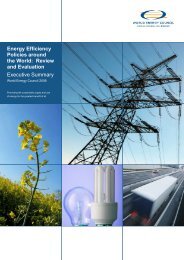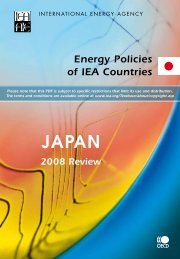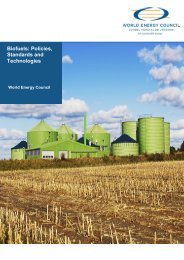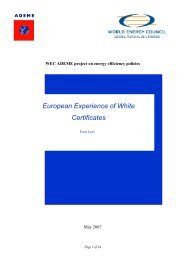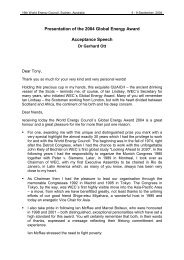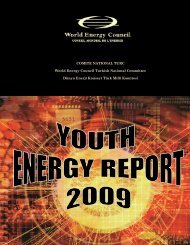Deciding the Future: Energy Policy Scenarios to 2050
Deciding the Future: Energy Policy Scenarios to 2050
Deciding the Future: Energy Policy Scenarios to 2050
You also want an ePaper? Increase the reach of your titles
YUMPU automatically turns print PDFs into web optimized ePapers that Google loves.
8<br />
<strong>Deciding</strong> <strong>the</strong> <strong>Future</strong>: <strong>Energy</strong> <strong>Policy</strong> <strong>Scenarios</strong> <strong>to</strong> <strong>2050</strong> World <strong>Energy</strong> Council 2007 Introduction<br />
Figure 1-2 Schematic representation of <strong>the</strong> four energy policy scenarios<br />
Source: WEC Study Group<br />
2. Cooperation and Integration. Alliances and<br />
cooperative initiatives between people allow<br />
<strong>the</strong>m <strong>to</strong> survive and prosper. In some cases,<br />
cooperation is driven by mutual need <strong>to</strong> deal<br />
with a common problem; in o<strong>the</strong>r cases, it is<br />
driven by <strong>the</strong> need <strong>to</strong> share complementary<br />
resources and wisdom for mutual benefit.<br />
Whatever <strong>the</strong> underlying reason, some<br />
degree of cooperation and integration in<br />
energy development has always existed,<br />
sometimes only bilaterally, often regionally,<br />
and in some cases internationally, and on a<br />
global scale. This study has reflected on<br />
three forms of cooperation and integration:<br />
first, <strong>the</strong>re is government <strong>to</strong> government<br />
collaboration in <strong>the</strong> form of treaties or<br />
international agreements, for example on<br />
standards or rules of trade; second, <strong>the</strong>re<br />
are private-public partnerships <strong>to</strong> design<br />
specific programmes or regulations <strong>to</strong><br />
achieve specific policy goals; and third, <strong>the</strong>re<br />
are company <strong>to</strong> company agreements, for<br />
example on <strong>the</strong> development of new<br />
technology or voluntary agreements <strong>to</strong><br />
address specific business goals.<br />
The nations of <strong>the</strong> world do not enjoy equal<br />
shares of available primary energy<br />
resources, know-how and technology,<br />
financial resources, human capacity, and<br />
raw materials. This inequality means <strong>the</strong>re is<br />
always a dynamic for some degree of



